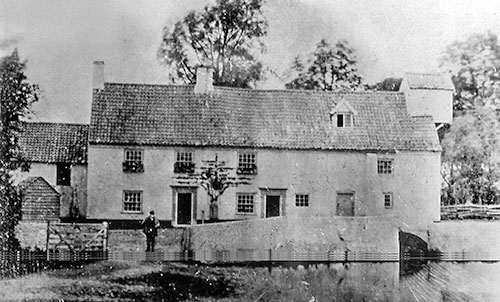 |
|
c.1870
before the second storey was added to the mill
|
|
Corpusty Mill
River Bure |
 |
|
c.1870
before the second storey was added to the mill
|
|
Corpusty watermill was also sometimes known as Saxthorpe Mill - possibly depending on which side of the river you lived. However, the mill house is in Corpusty and so is the majority of the mill. Grain was taken in on the Saxthorpe side and flour or feed was delivered out on the Corpusty side. The river is the parish boundary, with Saxthorpe to the east and Corpusty to the west. A mill has been on the site since the time of Domesday, when in fact two mills were recorded - Then 1 mill, later and now 2. By the 13th century the two mills were known as Gate Mill and Lound Mill. Gate Mill seems to have been owned by the Lord of the Manor, Hugh Tyrel who leased it to Simon de Creping and his heirs - "he rendering yearly three quarters of barley which came to the Mill." |
|
When the mill
house was built adjoining the mill in the 16th century, the roof line
was the same for both structures and both were built of brick with a pantile
roof. One of the old mill arches bears the date 1699. |
Royal Exchange Fire Insurance policy 85854 |
Wm. Leake of Corpusty in the County of Norfolk, Flour Drefser. On his Dwelling House and Water Corn Millhouse adjoining brick built and tiled and on the Mills in the said Millhouse together with the running Tackle and other parts of the Machinery belonging thereto situate in Corpusty aforesaid, £300. 4th March 1783 |
INSOLVENCY. |
THE CREDITORS of WILLIAM LAKE, of Saxthorpe, in the County
of Norfolk, Miller, are earneftly requefted to meet at the Houfe of
James Simmons, known by the Sign of the Half Moon, fituate in Brifton,
in the faid County, on Wednefday the Firft Day of October, 1783, about
Ten o'Clock in the Forenoon, that a State of his Affairs may be laid
before them, and Affignees appointed to difpofe of his Effects for their
equal Benefit. Perfons indebted to the faid William Lake are defired not
to make Payment till fuch Affignees fhall be chofen by the faid Creditors,
and further Notice given in this Paper. And to that End, the full Amount
of all the Debts of the faid William Lake may be afcertained, fuch of the Creditors as cannot be prefent at the intended Meeting, may be pleafed forthwith to fend the Accounts of their Demands upon him to THOMAS MENDHAM, of Brifton aforefaid. Norfolk Chronicle - 27th September 1783 |
Corpuffy Mills, October 9, 1783. |
For the Benefit of the Creditors, by CHARLES RICE, from Northwalfham,
on Monday the 20th Inftant, at the Flour Mills and Premifes of WILLIAM
LAKE, Miller, in Corpuffy aforesaid. ALL the HOUSEHOLD FURNITURE, Farming Stock, Implements in Hufbandry, Utenfils, and Effects of the faid William Lake. The SALE to begin about TEN o'Clock. All Perfons indebted t the Eftate and Effects of the faid William Lake, are defired to pay their refpective Debts to Mr John Barber, of Oulton, or Mr John P. Sterling, of Wood Dalling, Norfolk, Affignees of the Effects of the faid William Lake, within one Month from the Date of this Advertifement, otherwife they will be fued for Recovery of fuch Debts without further Notice. Norfolk Chronicle - 11th October 1783 |
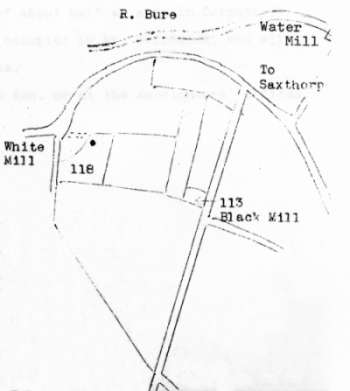 |
|
1838
Tithe Award Map - as redrawn by Harry Apling
|
|
Tithe Award 1839 |
|
| No. 1: Water Mill & Premises. Pasture | 0a. 1r. 39p. |
| No. 2: Home Meadow. Pasture | 1a. 3r. 32p. |
| No. 113: Black Mill. Pasture | 0a. 1r. 0p. |
| No. 118 White Mill. Pasture | 1a. 0r. 7p. |
| 3a. 2r. 38p. = 16s. |
|
Saxthorpe & Corpusty
|
|
Compact Watermill...two watermills (error
for two windmills corrected 18th August 1860) |
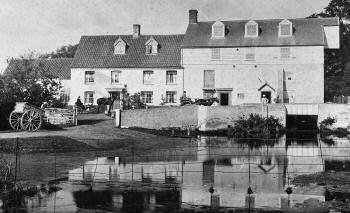
|
|
1896
enlarged mill and house
|
|
The photograph above shows that the left hand door in the mill is now no longer part of the house, which it was in the photograph at the top of the page. |
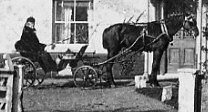 |
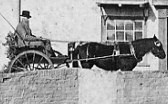 |
 |
||
|
Eliza
Goldsmith
|
Samuel
Goldsmith
|
Fred
Faircloth (on left)
- mill manager |
Robert Faircloth was shown as a journeyman miller at the mill in 1841 and by time of the 1851 census, his son Robert had married and moved to work at Castle_Rising_watermill. Eddie Faircloth (his brother?) ran the bake office. |
The 1851 census lists the miller as being Henry A. Massingham (38), who was a master miller employing 2 men and two boys. One of those boys was his nephew Samuel Goldsmith, who at the age of 16 in the 1851 census was already described as a miller. Samuel Goldsmith snr who died on 9th January 1851, left his farm, animals and the business to his son Samuel. However, Samuel jnr was, within six months, required to pay one third on the inheritance to Samuel snr's widow Frances and one third to his sister, Ann. Samuel's snr's daughter Ann, married Henry Massingham, so her one third share ended up with Henry Massingham (one of the will executors) who then took over as miller and farmer in Corpusty. Ann's brother Samuel Goldsmith jnr continued to own the farm and stock at Guestwick.
|
|
The Goldsmith family also owned two postmills in Corpusty known as the Black Mill and the White Mill |
Saxthorpe & Corpusty |
Compact Watermill...two watermills (error for two windmills corrected 18th August) |
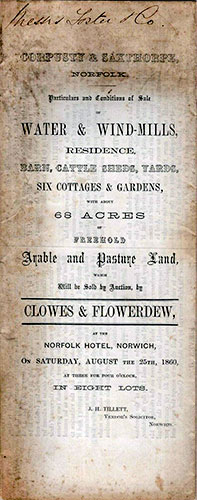 |
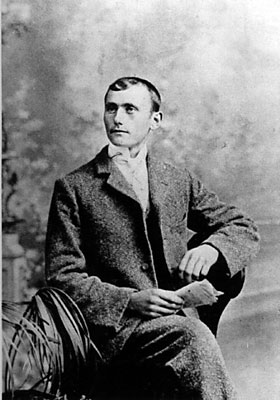 |
|
George William Hill on his wedding day in 1902 |
|
George William Hill
In common with most village folk he had his nicknames: 'Blue-choke' and 'Flacky'. |
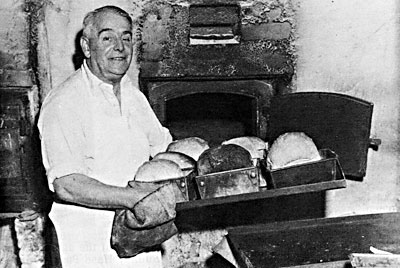 |
|
Eddie Faircloth, 1963 |
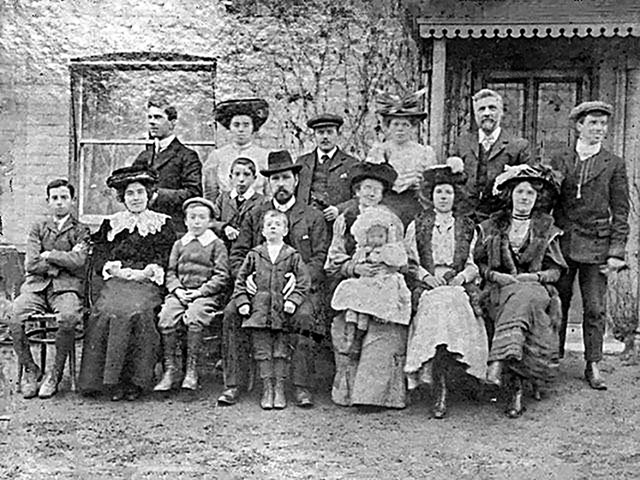 |
Faircloth family c.1905 (Eddie missing) |
My connection with the Faircloth family goes back to my Grandmother (Alice Elizabeth Faircloth) who married Sidney Robert Hill who was a baker at Weybourne. I feel fairly certain that Alice is the young lady sitting in the front row with a white dress (2nd from right). It would seem very likely that it is her father and mother, my Great Grandfather (Fred) and Great Grandmother who are the two centrally seated figures. My late Mother wrote on the reverse of photograph stating that it was 'Grandad and Grandma Faircloth' and she also mentioned that the baby was 'Carrie'. |
From 1890 to 1892 Samuel Goldsmith also had the lease for Foulsham towermill |
North of the railway bridge & on the west side of the road to the village were MILL VILLAS built by Samuel Goldsmith for mill workers. A tablet was inscribed S. G. 1898 |
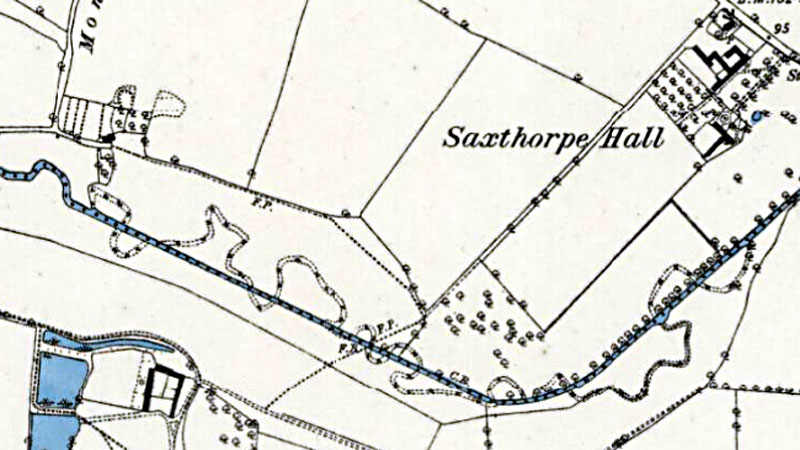 |
O. S. Map 1885 |
The above map clearly shows where a new cut had been dug below the mill to straighten the dramatic meanders in the river that would have impeded and slowed the flow of water leaving the mill as well as greatly contributing to flooding the low lying meadows. This could well have taken place c.1870 when the mill was enlarged. |
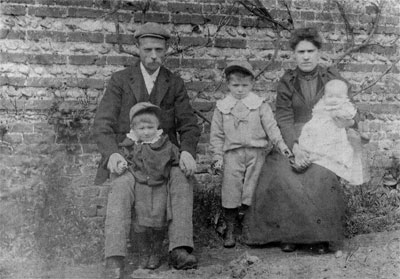 |
Charles Pegg and family c.1903 |
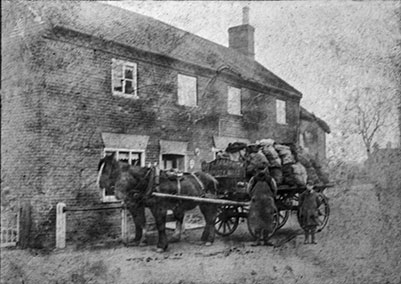 |
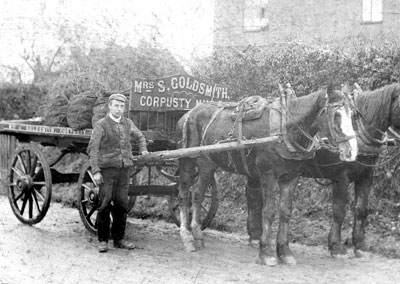 |
Mrs Goldsmith's coal delivery cart c.1903 |
Charles Pegg with Mrs Goldsmith's coal delivery cart c.1903 |
The above left hand photograph shows Charles Pegg, his wife Florence (née Bean) and their 3 eldest children, Charles, Arthur and Georgina. Charles was Mrs. Goldsmith's carter and it's said that he kept the horses in his outhouse. It is also said that he held fisticuff boxing matches outside his house in what became known as Fighter's Yard and that he was known as Fighter Pegg. The house was later demolished apart from the well. The Pegg family were residents of Corpusty and Saxthorpe for at least two hundred years and at the time the above photographes were taken, Charles' brother Philip was also living in the village with his wife Anne and working as a fishmonger. |
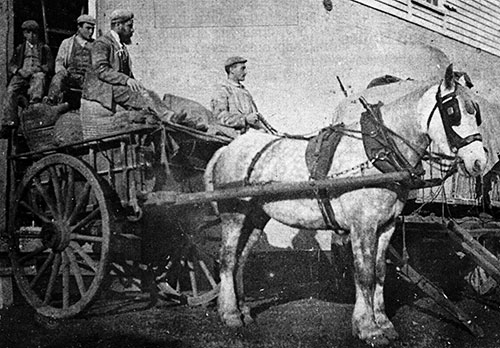 |
Mill workers c.1910 left to right - George Faircloth, Dick Hill Fred Faircloth, George Hill |
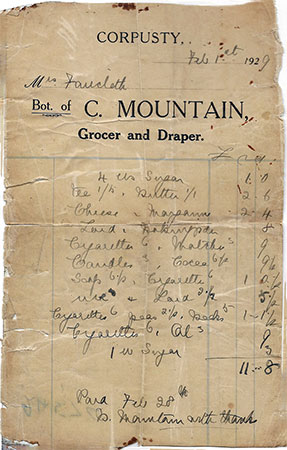 |
Grocery bill for Mrs Fairclough - 1st Feb 1929 |
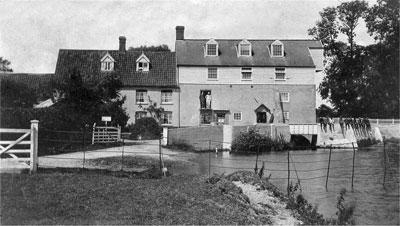 |
|
c.1912 with a ford instead of the bridge. The wall colour was changed in 1900. |
|
The ford was quite deep and cars would often get stuck. A horse was kept on hand nearby to pull them out. |
|
In 1908 Mr. Francis (Frank) Fisher bought the mill. He gave the children of the village a penny and an orange on Christmas mornings. These were given out in the Mill yard by his manager, Mr. Fred Faircloth, who had also been the manager when the Goldsmiths owned the mill. |
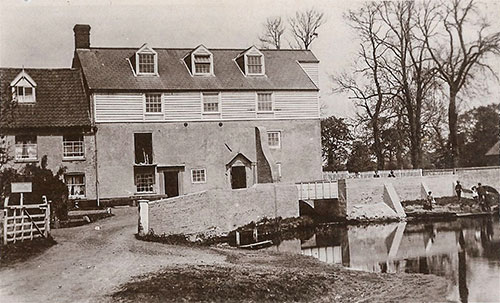 |
Postcard sent 17th November 1909 |
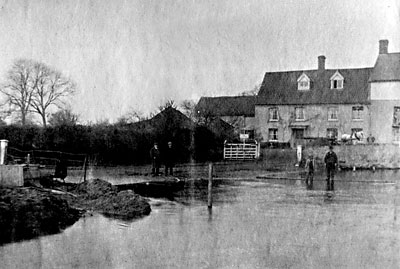 |
Winter high river c.1911 |
|
The great flood of August 1912 was especially bad at Corpusty and Itteringham. About two miles upstream from the mill, the railway crossed over a tributary of the Bure known as the Blackwater via a 20 foot high railway embankment and a small single arch bridge. The small bridge was unable to cope with the tremendous amount of water trying to flow into the Bure and consequently the water level quickly rose and a vast lake built up behind the embankment. When the water was at its height, a train full of holidaymakers passed over the embankment and bridge. Upon drawing into Corpusty station the driver reported that he felt the embankment to be unsafe. Shortly afterwards the whole structure gave way unleashing a virtual tidal wave of flood water into the Bure and surrounding area. On arriving at Corpusty Mill a few minutes later, the majority of the water turned to sweep around the gable end of the mill on the north east side before rejoining the river course and heading towards Itteringham. It is this mass of water that almost certainly destroyed the old_single_arch_bridge in that village. At one point the water at Corpusty reached the mantelpiece of one of the hearths in the mill house. |
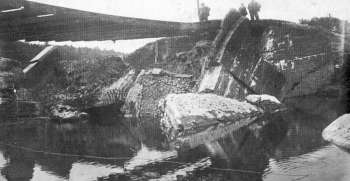 |
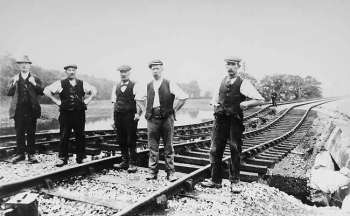 |
|
Blackwater
Bridge in August 1912 with the railway line suspended in mid air
|
|
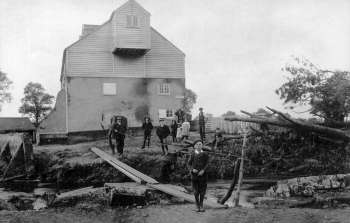 |
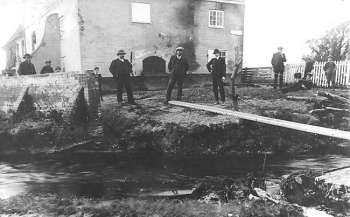 |
|
Remains
of the old bridge near the gable end after the flood in August 1912
|
|
|
Up until this great flood, the road crossing by the mill was a ford, as can be seen in the second photo on this page. Crossing such a wide area of water could be quite hazardous and vehicles frequently became stuck in the resulting mud - a horse was kept nearby to help pull them free. Motorists who knew the area often used the much shallower ford at Little London, a mile higher up. Prior to 1912, villagers had conducted a 20 year campaign to have a bridge built and after the flood, the County Council at last provided the funds. In order to accommodate this, the road was built up and moved further away from the mill, with the bridge finally opening in 1914. By 1999, the bridge was deemed unsafe for heavy goods vehicles. These were then diverted through Aylsham until the bypass was completed in early 2002. The bridge was then renovated. |
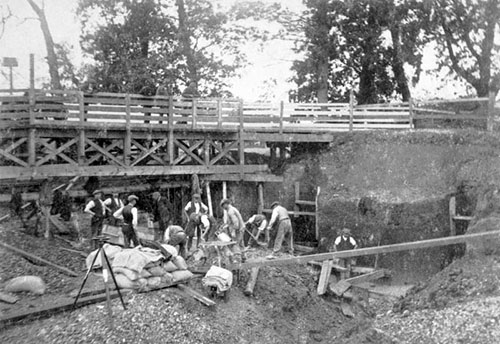 |
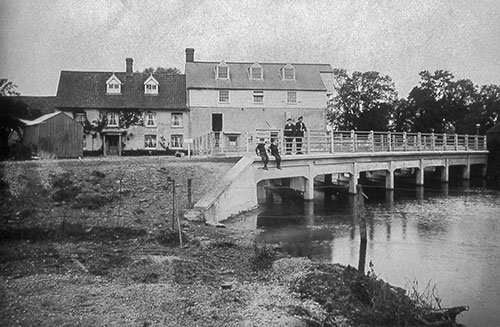 |
New bridge under construction at Elmerdale, a mile downstream from the mill - c.1913 |
The new road bridge in front of the mill - 1914 |
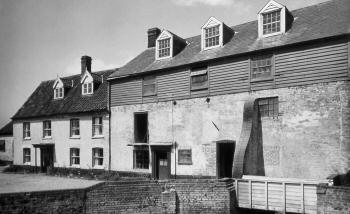 |
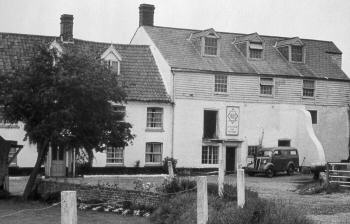 |
|
1947
|
1954 |
|
||||
|
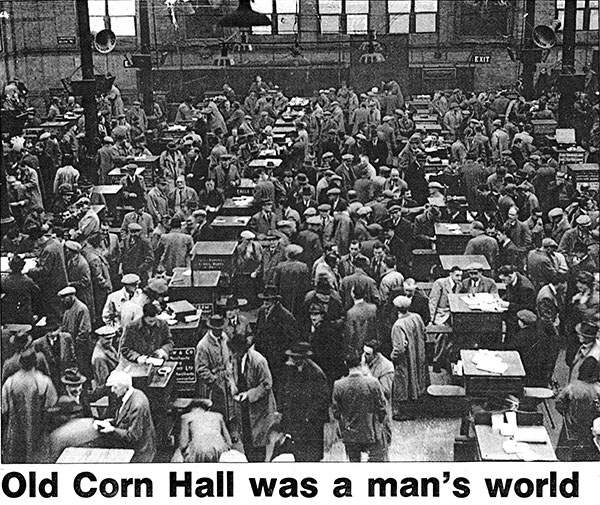 |
EDP photo of Norwich Corn Hall where much of Norfolk's corn trading took place - c.1960 D. J. Last of Corpusty Mill occupied Stand 31 since 1st July 1947 |
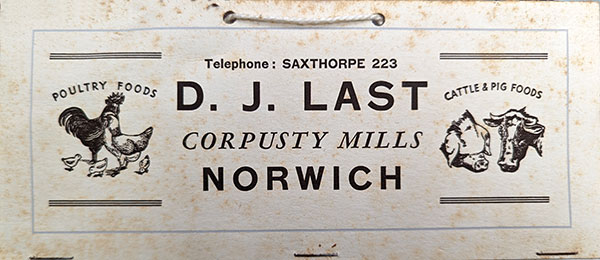 |
Mill customer calendar header - 1954 |
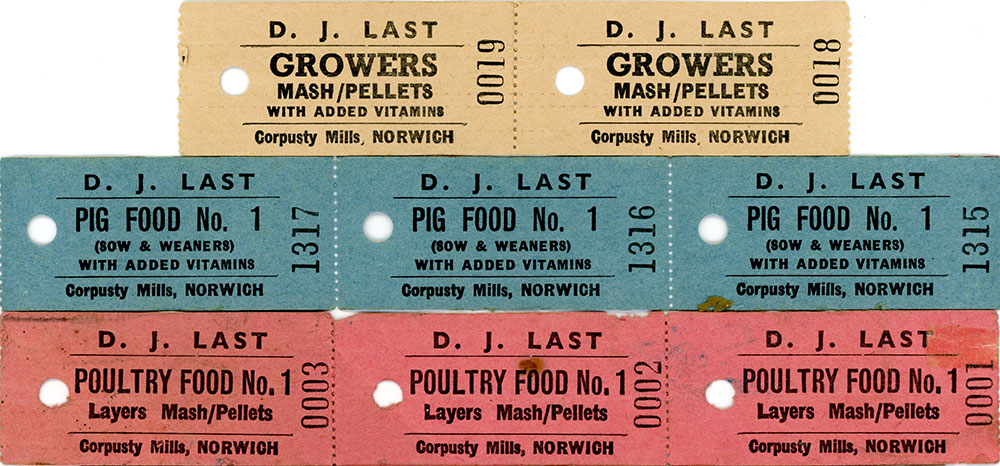 |
Selection of sack labels - c.1960 |
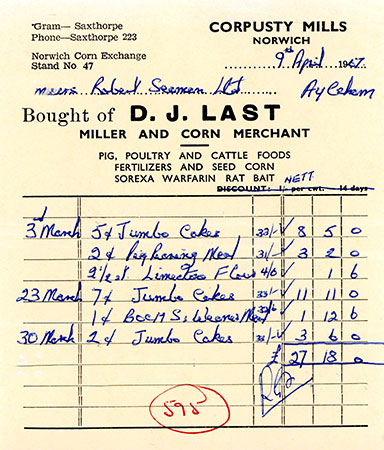 |
Mill invoice - 9th April 1967 Old stock remaining after mill closure on 28th February 1967 |
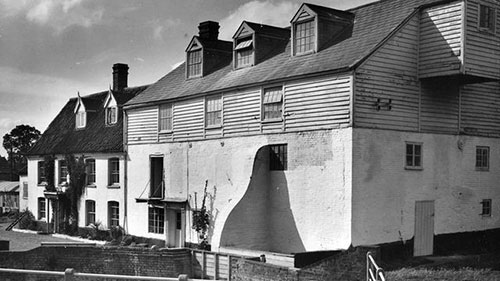 |
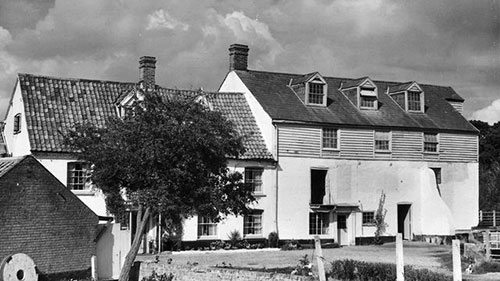 |
16th September 1963 |
|
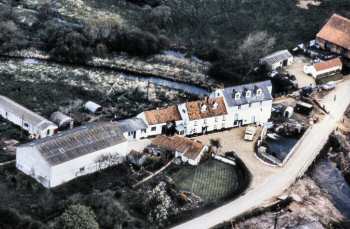 |
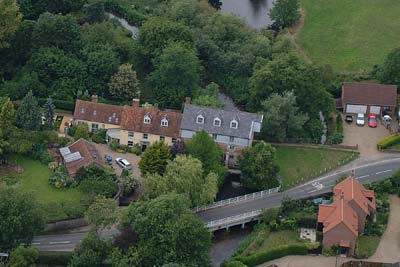 |
1965 |
30th June 2004 |
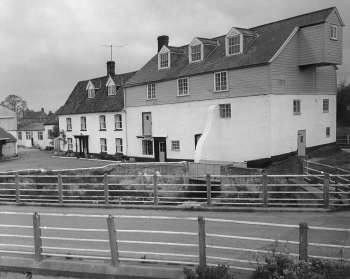 |
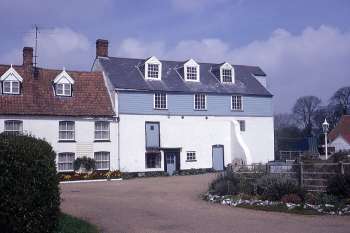 |
|
1968
|
May 1968 |
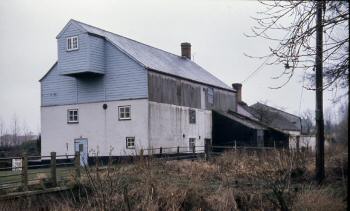 |
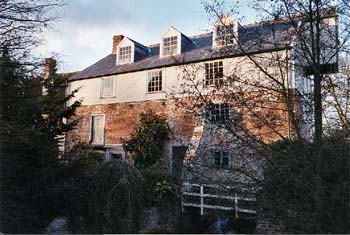 |
|
c.1970
|
December
2002 |
|
The breastshot waterwheel was made of pearwood. It was 20 feet in diameter and 7 feet wide. It was removed along with its gearing and stones in 1939 as flour milling ceased and the mill switched completely to grist (animal feed) milling with all power being supplied by a Crossley heavy oil engine. |
|
|
|
Milling
finally ceased in 1965. However, all the machinery including the heavy
oil engine, seed crushers and milling machinery were left intact and
remain so to this day (2002) |
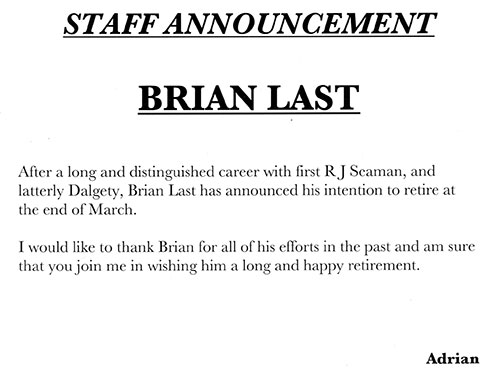 |
Brian Last miller of Corpusty . . . 2000 |
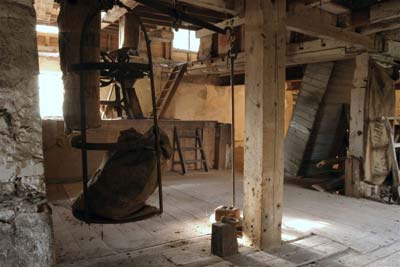 |
|
October
2004
|
The photo above is of the first floor with the stonefloor visible as a raised section just above it. The stonefloor housed the three pairs of stones and the oat crusher. The sloping housing of the elevator installed by Jack Last in 1954 is visible to the rear and at the time the photo was taken, the mill interior had remained untouched since the mill ceased working in 1965. |
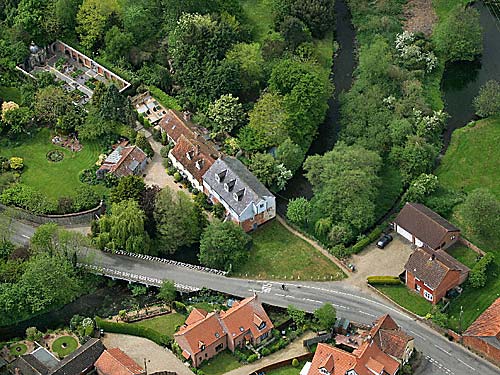 |
9th May 2007 |
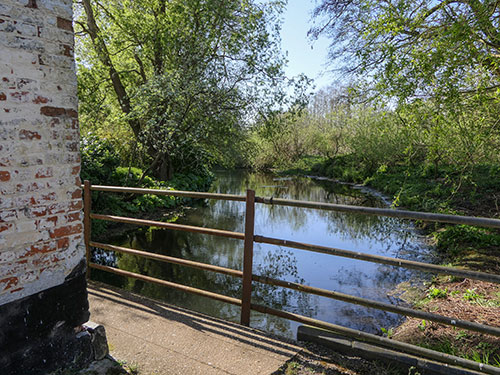 |
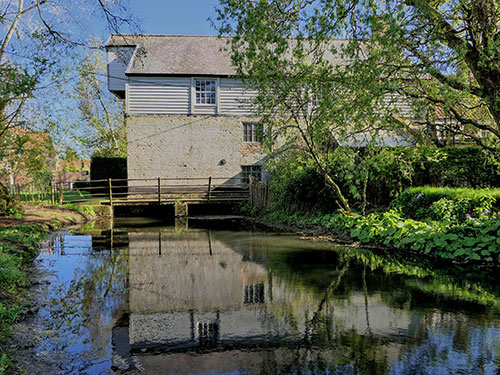 |
Mill dam - 24th April 2022 |
Rear of mill with bypass and wheelrace channels - 24th April 2022 |
 |
21st August 2024 |
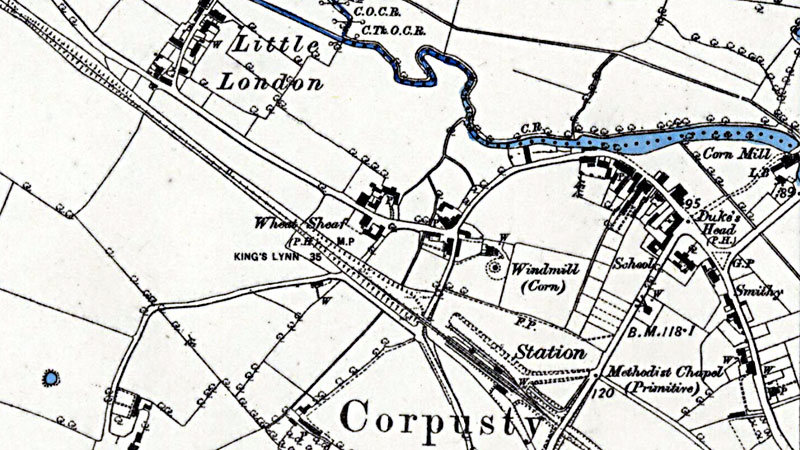 |
O. S. Map 1885 |
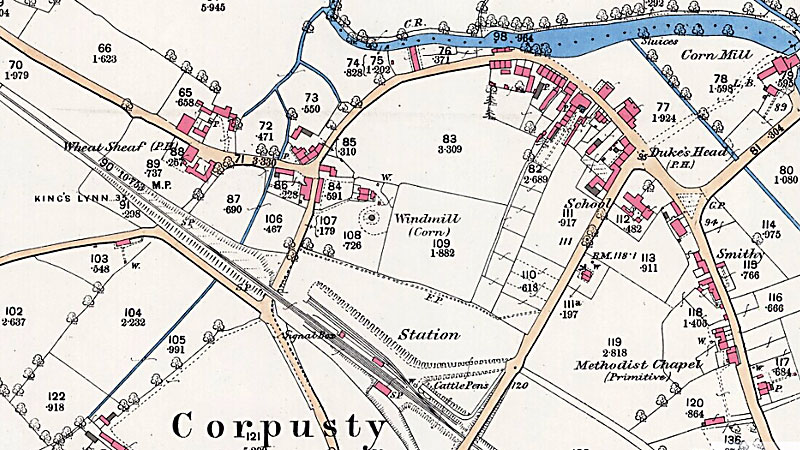 |
O. S. Map 1885 |
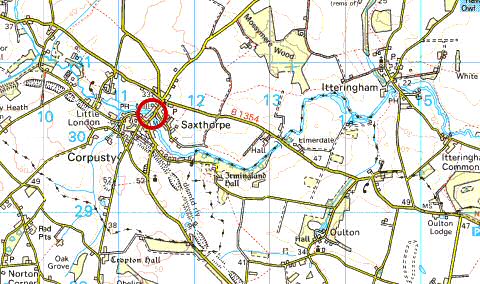 |
O.S. Map 2005 Image reproduced under licence from Ordnance Survey |
|
c.13th century:
Lord of the Manor, Hugh Tyrel, owner. Leased to Simon de Creping and
his heirs
9th January 1851: Samuel Goldsmith snr died
White's 1854: Samuel Goldsmith, miller & farmer
Harrod's
1863: William Bruce, miller
15th April 1899: Samuel Goldsmith jnr died |
|||||||||||||||
If you have any memories, anecdotes or photos please let us know and we may be able to use them to update the site. By all means telephone 07836 675369 or
|
| Nat Grid Ref TG1145 3030 | Copyright © Jonathan Neville 2005 |